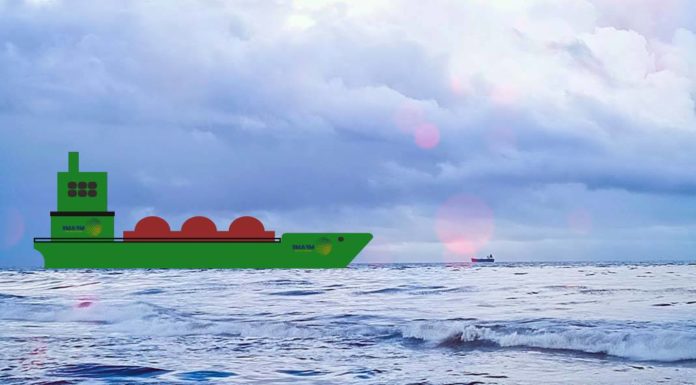- ACP revises Panama Canal transit tolls for the second time after expansion, increasing the perks for container ships and hike prices for other vessels.
- The original ‘Panamax’ locks can handle container ships up to a maximum capacity of around 4,500 twenty-foot equivalent units (TEU).
- The ‘Neopanamax’ locks, allow for container ships with capacities of up to around 15,000 TEU, as well as LNG carriers, and 84,000 cum VLGCs.
- The container ships will be priced the same as per the new toll proposal, but the loyalty program provides discounts to the highest-volume users.
- Ships bringing more containers to East Coast ports to steal market away from cross-country intermodal rail shipments of containers.
According to an article published in Freight Waves, the changes proposed to the Panama Canal transit tolls would further increase the perks for container ships and hike prices for other vessel types.
Consequences to ripple beyond shipping
With the change in the canal toll, more container lines will be convinced to bring Asian exports to the U.S. East Coast via the Panama Canal, instead of unloading in California. This is worse for intermodal rail and the better for trucking.
Toll changes proposed by The Panama Canal Authority (ACP) will come into effect from January 1, 2020. The announcement was made on June 14, with a public comment period to extend until July 15, following which a decision will be finalized.
Panama canal locks
Panama Canal locks cater to two different vessel sizes.
‘Panamax’ locks
The original ‘Panamax’ locks can handle container ships up to a maximum capacity of around 4,500 twenty-foot equivalent units (TEU), as well as smaller and medium-sized dry and liquid bulk ships.
‘Neopanamax’ locks
The ‘Neopanamax’ locks, which came to light in June 2016, allow for container ships with capacities of up to around 15,000 TEU, as well as liquefied natural gas (LNG) carriers, and 84,000 cubic meter very large gas carriers (VLGCs), which transport liquefied petroleum gas (LPG).
One of the reasons for building the Neopanamax locks was that the larger container ships would significantly reduce carriers’ unit costs. This would, in turn, theoretically sway them to shift more of their Asia-U.S. volumes to the East Coast via the Panama Canal, as opposed to Los Angeles/Long Beach.
Pricing revisions
The container ships will be priced the same as per the new toll proposal, but the loyalty program provides discounts to the highest-volume users.
At present, container shipping users that transit between 450,001 and 999,999 TEU of total capacity in a 12-month period receive a $1 per TEU reduction in tariffs for one month.
A $2 and $3 reduction will be received for ships with a capacity of 1,000,000 -1,499,999 TEU and those with 1.5 million TEU or more, respectively.
‘Loyalty Plus’ plan
The new proposal calls for the $3 reduction to apply to volume from 1.5-2 million TEU; for a $3.25 per TEU reduction for customers with 2,000,001-3,000,000 TEU; and for those with over 3 million TEU, it creates a ‘Loyalty Plus’ plan providing a $5 per TEU reduction, based upon the number of TEU exceeding 3 million.
Liner customers have saved over $95 million in tolls since the loyalty program was established in 2016, says the Panama Canal Authority.
There are currently three customers with 1.5 million TEU or more per year in volume, two with 1 million to 1,499,999 TEU, and four with annual capacity between 450,001 and 999,999 TEU.
ACP is proposing price increases which is in contrast to its strategy for container ships, where more transits are incentivized.
Increase in toll prices by ACP
The plan proposes a
- 10% increase in toll for crude and product tankers through the Panamax locks and
- 8% through the Neopanamax locks.
Additionally,
- a variable factor of 8% for chemical tankers,
- 8% for LPG carriers through the Panamax locks and
- 15% through the Neopanamax locks; and
- for LNG carriers, 8.5% when laden,
- 9% when in ballast, and
- 8% on the return transit of a round-trip will be implemented.
An increase of 5-15% toll will be levied for vehicle carriers; for cruise ships and other passengers vessels, 2-3% for the Panamax locks and 12% for the Neopanamax locks.
In the case of dry bulkers, 14-17% for carriers of iron ore using the Neopanamax locks and 25-27% for certain vessels ballasting through those locks will be collected.
There would be no toll increase for bulkers using the Panamax locks.
Second toll revision after expansion
These toll changes marks the second time the ACP has revised its price since the expansion project was completed.
In October 2017, the ACP provided special backhaul incentives for container shipping customers, while increasing tolls for LNG and LPG ships by 14% and 29% respectively.
The Neopanamax locks were chiefly conceived for container ships. The initial planning of the new locks predated the U.S. shale gas boom and the prospects for U.S. LNG exports to Asia, while the volume of VLGCs using the canal to bring U.S. propane to Asia is much higher than expected.
The latest ACP figures shows that container ships account for 47% of Neopanamax locks transits, LPG ships (VLGCs) for 24%, and LNG carriers for 13%.
Rail and trucking effects
With a rise in global trade volumes, the combination of continued Neopanamax locks toll increases for non-container ships and rising incentives for container ships could equate to more boxes being routed to the East Coast.
Ships bringing more containers to East Coast ports could steal market share away from cross-country intermodal rail shipments of containers from California to the eastern states.
 Deutsche Bank transportation analyst Amit Mehrotra explained that there are staggering and underappreciated implications for the ‘middle mile’ – i.e., between the container offloading from the ship and the beginning of the final mile, during an episode of FreightWaves Radio on June 8.
Deutsche Bank transportation analyst Amit Mehrotra explained that there are staggering and underappreciated implications for the ‘middle mile’ – i.e., between the container offloading from the ship and the beginning of the final mile, during an episode of FreightWaves Radio on June 8.
Mehrotra added that the Port infrastructure projects are continuing to allow more container ships to call on the East Coast. That drives the acceleration of the decrease in length of haul. When the length of haul decreases, trucking takes more market share of the moves.
Mix shift benefiting at J.B. Hunt
Mehrotra continued, “If you look at a company like J.B. Hunt [NASDAQ: JBHT], which is an intermodal bellwether, you see a year-on-year decline in the length of haul in every quarter for the past six quarters.”
He quoted that the company witnessed a massive mix shift benefitting the lower-length-of-haul eastern network as opposed to their transcontinental network.
Referring to the shift from boxes being unloaded, he said there are real structural challenges for the intermodal.
“The trend in port infrastructure [on the East Coast] is undeniable. Savannah is investing a significant amount. In New York/New Jersey, they raised the Bayonne Bridge to allow larger ships to call. And when you combine that with the fact that the majority of the U.S. population actually lives in the East, we think there’s a market shift [in ocean shipping networks] toward the East – which therefore moves volumes away from intermodal and into trucking.”
Did you subscribe to our daily newsletter?
It’s Free! Click here to Subscribe!
Source: Freightwaves

















